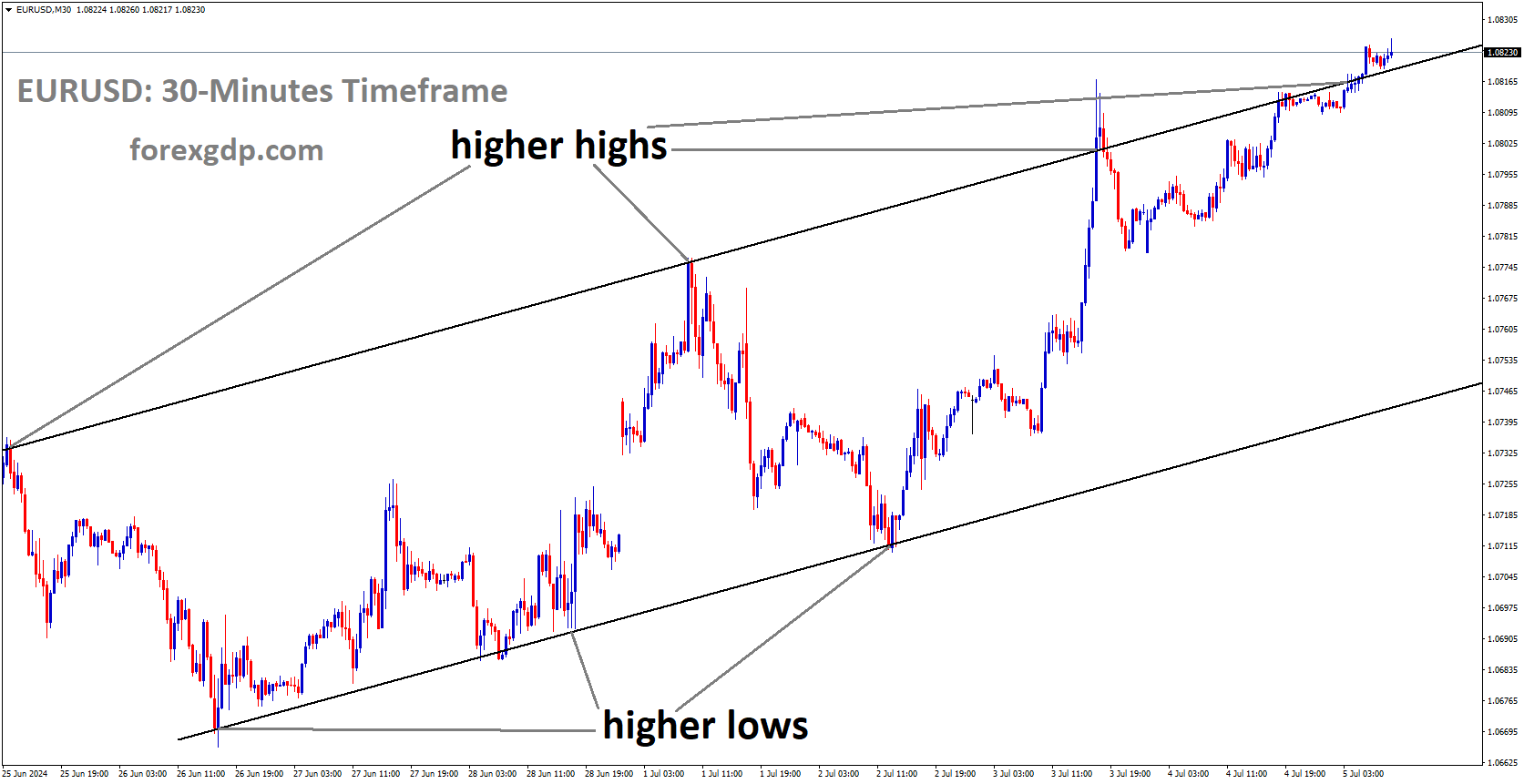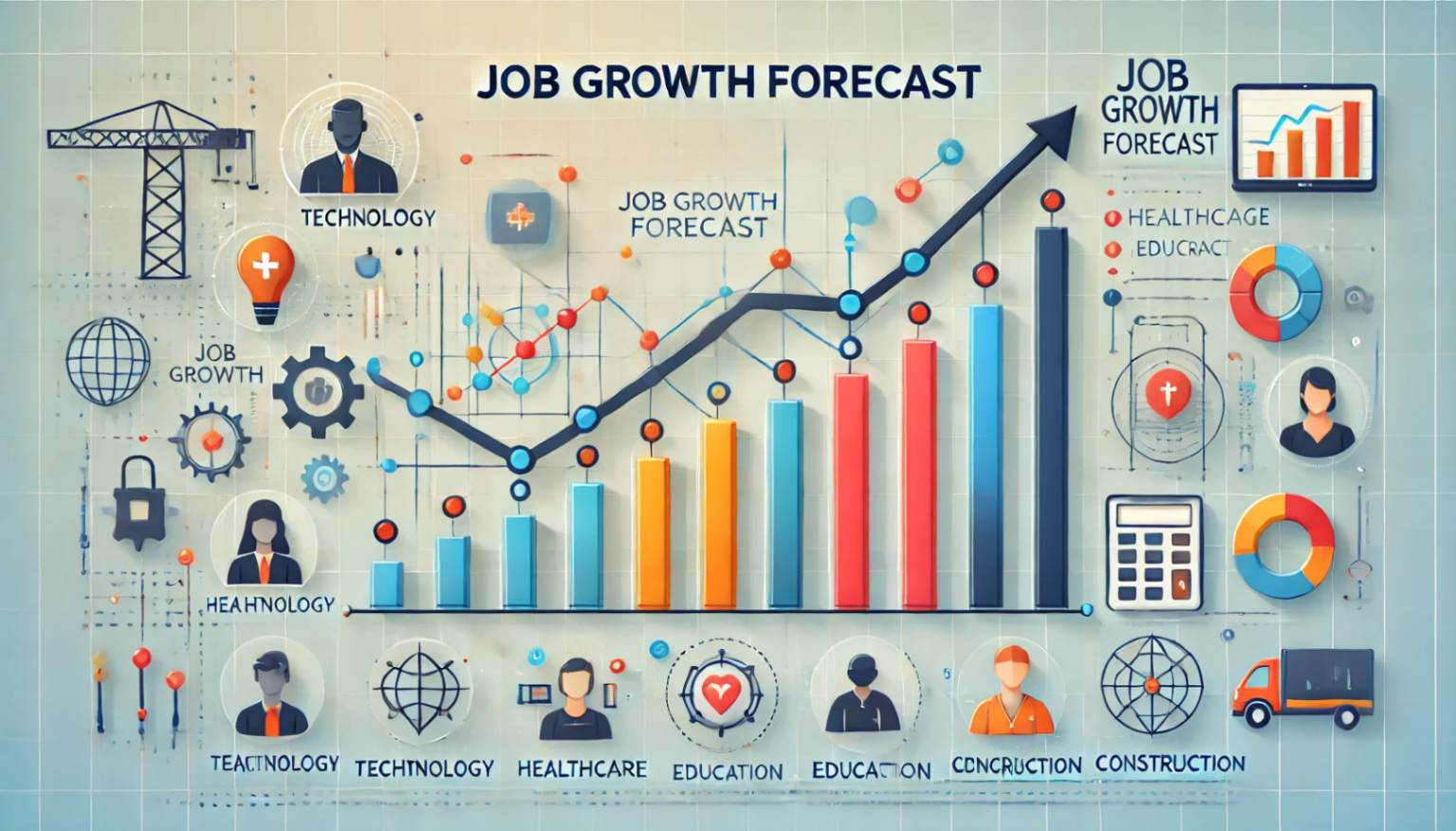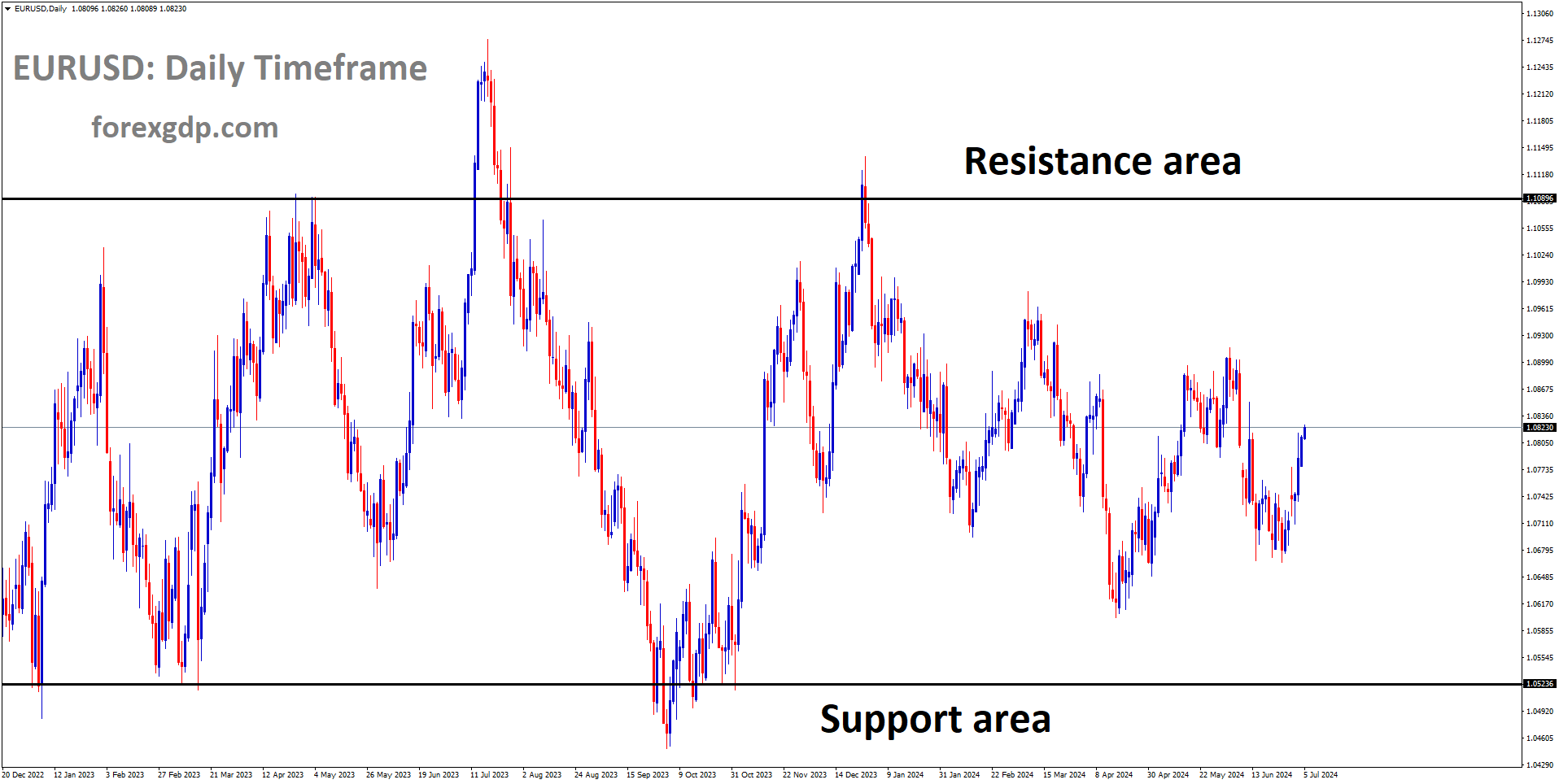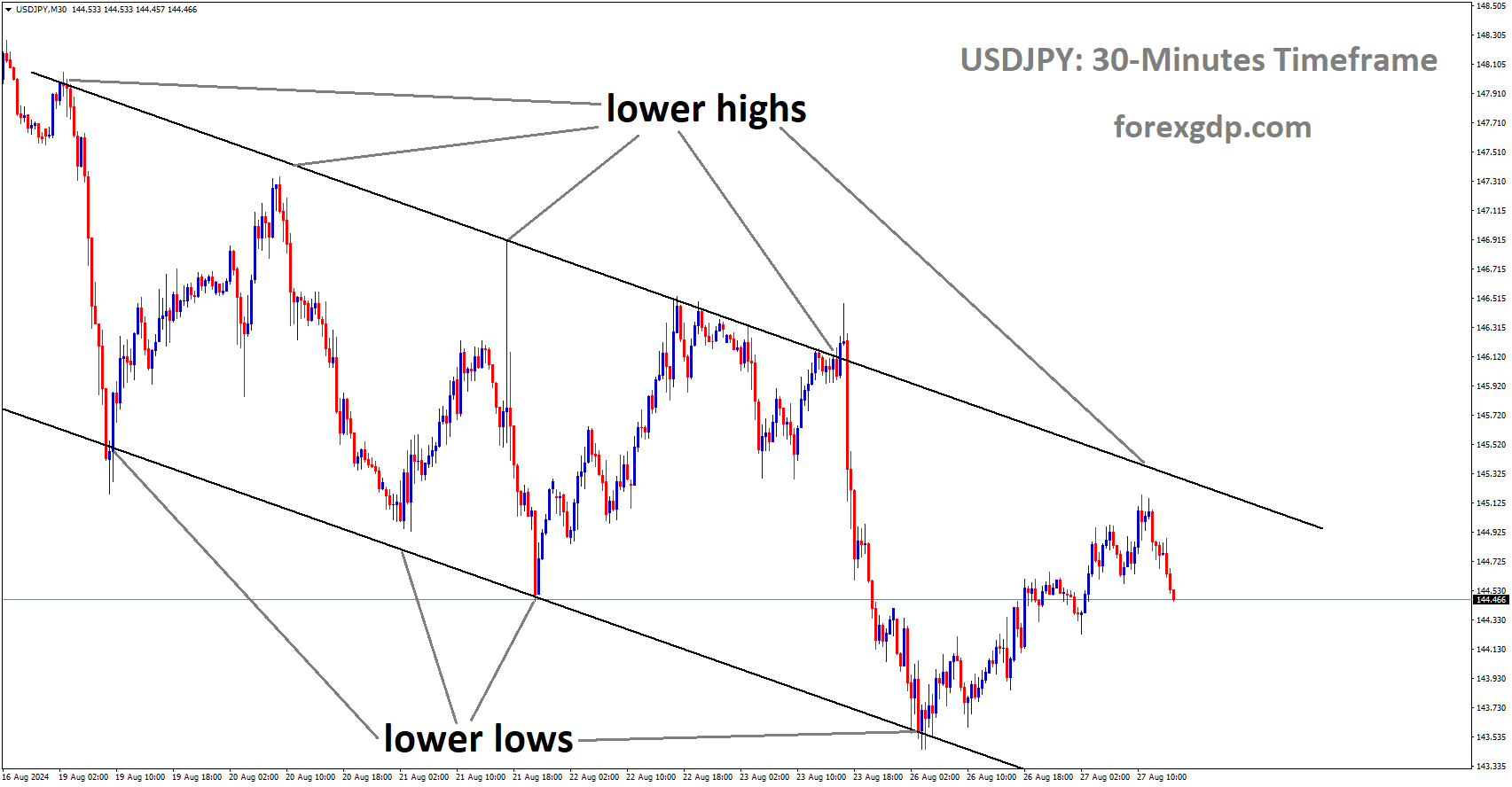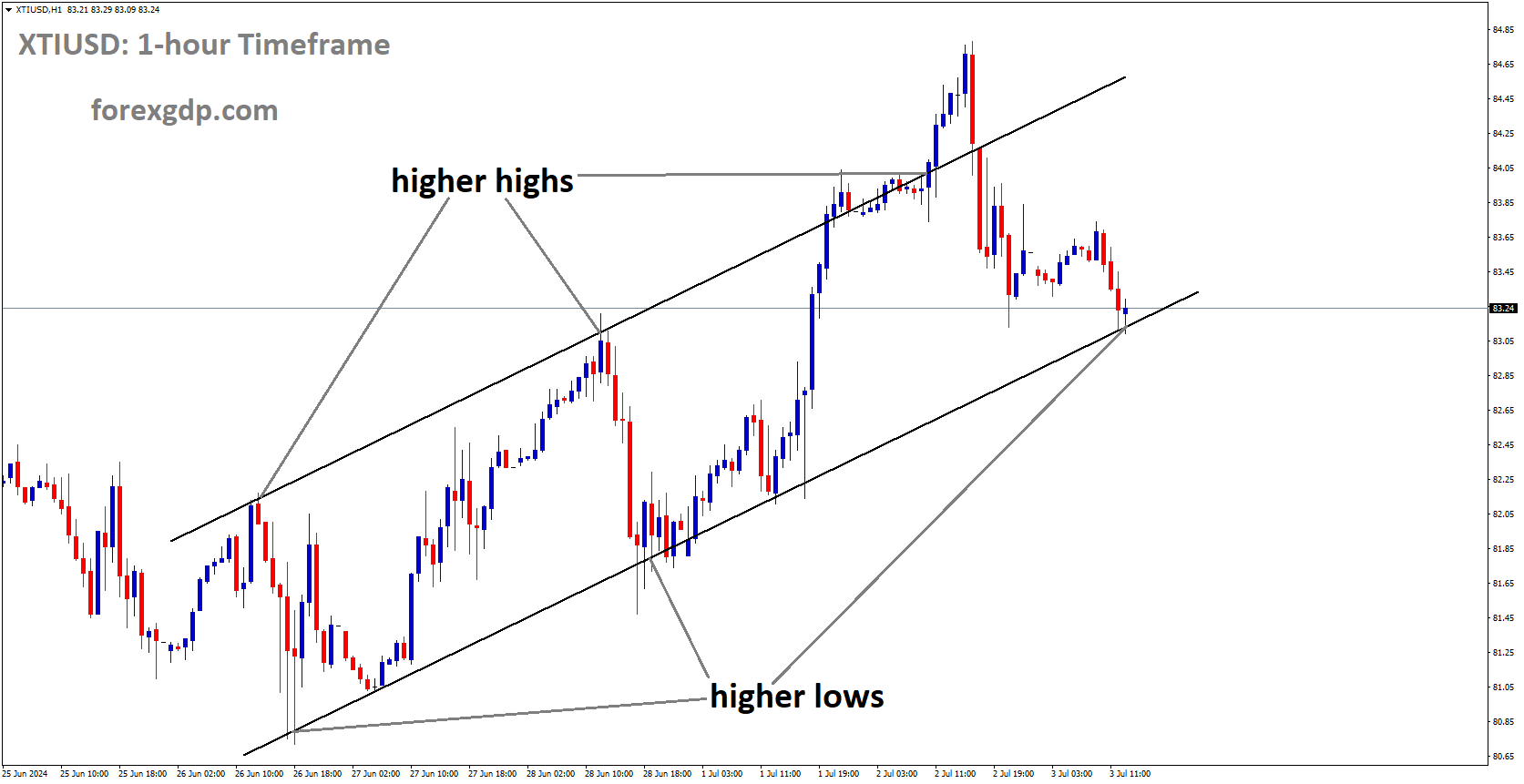EURUSD is moving in Ascending channel and market has reached higher high area of the channel
US Nonfarm Payrolls: What to Expect and Why It Matters
The anticipation is building as the United States gears up for the release of the latest Nonfarm Payrolls (NFP) report. Expected to show a rise of 190,000 jobs in June, down from May’s 272,000 increase, this report is a crucial indicator for both economists and investors. Let’s dive into the details and explore why this report holds such significance.
Understanding the Nonfarm Payrolls Report
What is the Nonfarm Payrolls Report?
The Nonfarm Payrolls report, released by the United States Bureau of Labor Statistics (BLS), provides a comprehensive overview of the number of jobs added or lost in the economy over the previous month, excluding farm workers, private household employees, and non-profit organization employees. This report is a key indicator of economic health, influencing financial markets and policy decisions.
Why is it Important?
The NFP report is a primary indicator of the strength of the labor market and overall economic activity. It affects everything from stock prices to interest rates and even consumer confidence. A strong report can indicate a booming economy, while a weak report might signal economic troubles.
June’s Expectations: A Closer Look
Job Growth Forecast
For June, the NFP report is expected to show that the US economy created 190,000 jobs, a decrease from the 272,000 jobs added in May. This slowdown is anticipated but still represents a healthy job market. The unemployment rate is predicted to hold steady at 4.0%, suggesting that the labor market remains relatively stable.
Wage Growth and Inflation
Wage growth is another critical aspect of the NFP report. Average Hourly Earnings, a closely-watched measure of wage inflation, are expected to increase by 3.9% year-over-year through June, following a 4.1% rise in May. Wage growth impacts consumer spending, which is a significant driver of economic growth.
The Fed’s Perspective: Jerome Powell’s Remarks
Powell’s Dovish Comments
Recently, US Federal Reserve (Fed) Chairman Jerome Powell made remarks that were perceived as dovish by the markets. Speaking at the European Central Bank (ECB) Forum on Central Banking in Sintra, Powell expressed optimism about recent inflation reports but emphasized the need for more data before considering any rate cuts. This cautious stance suggests that while the Fed acknowledges progress in controlling inflation, it is not yet ready to change its policy direction.
Impact on Rate Cut Expectations
Following Powell’s comments and recent employment data, market expectations for a Fed rate cut have increased. Investors are now betting on a potential rate cut in September, with a 73% probability, up from 64% earlier in the week. This shift in expectations is driven by the combination of dovish remarks and weaker-than-expected employment data from the private sector.
EURUSD is moving in box pattern
What Could Influence the Fed’s Decision?
Private Sector Employment Trends
The private sector added 150,000 jobs in June, down from 157,000 in May, according to the ADP report. While this figure missed analysts’ estimates of 160,000, it’s important to note that the NFP report has often outperformed the ADP data in recent months. Consistency in job growth, despite slight fluctuations, provides the Fed with a broader perspective on the labor market’s health.
Market Sentiment and Predictions
Previewing the June employment situation, analysts have mixed views. Bloomberg’s consensus estimate stands at 190,000, with a whisper number slightly higher at 198,000. The average monthly job gain over the past year has been around 232,000, indicating a strong but slightly cooling labor market. Analysts also predict that the unemployment rate will remain steady at 4.0%, with a slight increase in the participation rate to 62.6%.
Why This Matters for the Average Person
Impact on Daily Life
For everyday individuals, the NFP report can have direct and indirect effects. Job growth and wage increases can lead to more job opportunities and potentially higher salaries. Conversely, slower job growth might signal economic caution, influencing everything from job security to spending habits.
Influence on Financial Decisions
The report can also affect personal financial decisions. For instance, if the Fed decides to cut interest rates based on the NFP data, borrowing costs for mortgages, car loans, and credit cards might decrease, making it cheaper to finance big purchases.
Investor Insights
For investors, the NFP report provides insights into the health of the economy and can influence stock market movements. A stronger-than-expected report might boost investor confidence, leading to higher stock prices, while a weaker report could have the opposite effect.
Final Thoughts
The upcoming Nonfarm Payrolls report is more than just a set of numbers; it’s a snapshot of the US economy’s health and a critical indicator for future policy decisions. With job growth expected to slow but remain positive, and wage growth continuing at a steady pace, the report will be closely watched by economists, investors, and policymakers alike. Whether you’re an investor, a business owner, or just someone trying to understand the economic landscape, the NFP report offers valuable insights into the current and future state of the economy. So, keep an eye out for the release and consider how it might impact your financial decisions and the broader economic environment.
Don’t trade all the time, trade forex only at the confirmed trade setups
Get more confirmed trade signals at premium or supreme – Click here to get more signals , 2200%, 800% growth in Real Live USD trading account of our users – click here to see , or If you want to get FREE Trial signals, You can Join FREE Signals Now!

